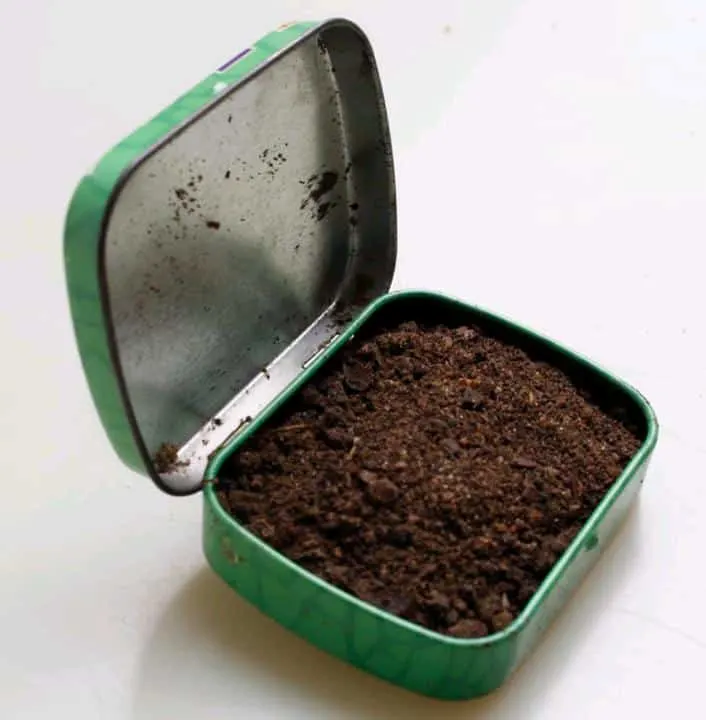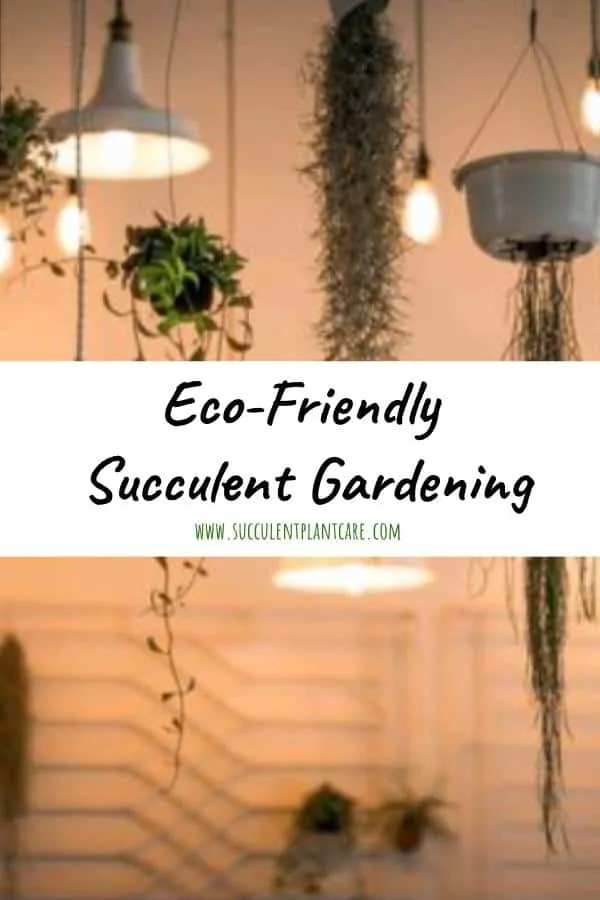Are you looking for a more eco-friendly way to care for your cacti and succulents? These days, we can find eco-friendly products easily. Labels such as ‘environmentally friendly’, ‘green’, ‘organic’ seem to be everywhere from food items to gardening products.
While some companies are not truly ethical in their labeling and are just in it for the sales, a lot of companies are actually making an effort to produce environmentally friendly products. There is a huge market for eco-friendly products and companies will continue to produce them as long as there is a demand for them.
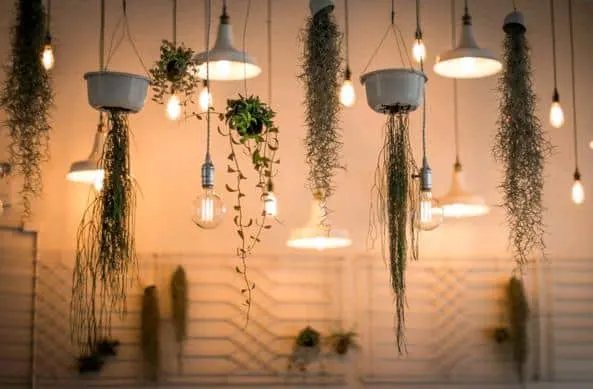
The term eco-friendly or environmentally-friendly can be loosely defined as anything that will not be harmful, or reduce the harm to the environment and ecosystems. Environmental or ecological footprint describes the effect a person, a population, or an activity has on the environment. To garden the eco-friendly way is to reduce the environmental footprint we leave on the environment.
Whether a beginner succulent grower or a seasoned one, we can consciously reduce the impact we have on the environment by being more aware of the products we choose and how these products affect the ecosystems and the environment for generations to come. We can do a small part in helping to conserve the planet.
How do we care for cacti and succulents in a more eco-friendly way?
Using Organic or Natural Fertilizers
What is the difference between organic and inorganic fertilizers? Both have the same purpose– to feed the plants and provide them with necessary nutrients such as nitrogen, phosphorus and potassium to grow. Organic and inorganic fertilizers differ in the ingredients they contain and how nutrients are delivered to the plants. Organic fertilizers work over time to create a healthy growing environment, while inorganic fertilizers provide rapid nutrition and faster results.
Inorganic or synthetic fertilizers are manufactured using artificial materials and synthetic chemicals. They work fast because their main purpose is to deliver high concentrations of nitrogen, phosphorus and potassium directly into the plants.
Organic or natural fertilizers contain only organic matters such as plant and animal based products. Through natural processes these organic matters supply the plants with nitrogen, phosphorus and potassium. Organic fertilizers work much more slowly than inorganic fertilizers because they work by enriching the soil and working to improve the soil’s quality over time rather than providing rapid nutrients to the plants. Inorganic fertilizers, while working rapidly to supply nutrients to your plants, do not enrich the soil and can leave byproducts that tend to build up overtime.
Choosing to use organic vs. inorganic fertilizers depends on the current needs of your plants and your preferences in terms of cost and environmental impact. Consider the impact on the soil overtime and the environmental impact of the fertilizers you are using.
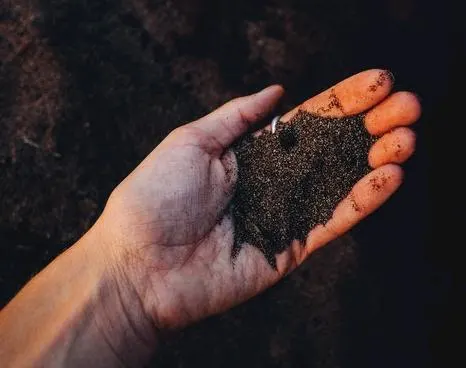
Manure Tea for Succulents
A popular organic alternative to chemical fertilizers is manure tea bags. What is manure tea? Manure tea is made from collecting the manure of any livestock. The manure that has been collected is then fermented and cured. Once the manure is cured properly to destroy potential harmful pathogens, it is transferred into a steeping material, such as a burlap sack or gunny sack. Manure tea bags are then ready to use as fertilizers for your cacti and succulents.
The manure tea bag is steeped in water for about 2-3 days, in a covered container. The tea from the steeped water can then be used to water the succulents. The remains of manure left in the sack may also be spread as fertilizer on your plants.
The process of using manure tea as fertilizer is sustainable, meaning waste products are re-used beneficially. There are recipes out there to try to make your own manure tea bags. They are also available for purchase and comes with instructions on how to use. These are great alternatives to the commercial chemical fertilizers. The tea is mild enough that you have less chances of burning your succulents.
Composting
Another natural way to provide nutrients to your plants is by composted materials. Composting is a natural process of using organic materials from your garden or kitchen scraps and turning them into decomposed materials that enhance the growth of beneficial soil microbes. Decomposed materials become soil amendments that are rich in nutrients. This rich soil amendment is referred to as “black gold” by gardeners.
Using compost can be an alternative to chemical fertilizers or used as a supplement with fertilizers. Compost promotes a healthier growing environment for your plants by enhancing the quality of the soil. Composting also reduces landfill waste and is a sustainable way of feeding nutrients to your plants. Adding a top dressing of rich compost to your succulent plants can do wonders for their appearance and growth.
Composting can be a daunting task if you are thinking of starting one. For others, composting has become a way of life. It is a sustainable alternative to chemical fertilizing and have many beneficial effects not just for the plants but for the environment.
You can purchase organic compost from a composting facility or garden center, or you can decide to make your own and start composting. There are several different ways to compost. You can do it outdoors in your backyard, or even indoors if you choose to.
These three main ingredients are the basic requirements to composting:
- Browns – these are materials that include dry leaves, branches, twigs, dry hay, shredded newspaper
- Greens – these are materials that include vegetable and fruit scraps, grass clippings, coffee grounds and filters, tea leaves and bags, eggshells
- Water – the right amount of water, along with greens and browns, are the basics to composting
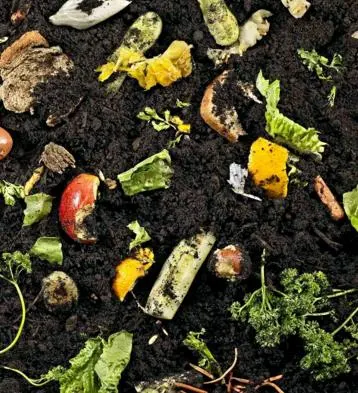
You can start by adding a layer of browns on the bottom of the compost pile. Then add a layer of greens on top of the browns. Alternate the layers of browns and greens. Water the compost regularly so it stays moist. Water provides moisture to help break down the organic matter. Cover the compost pile with plastic, tarp, or other suitable covering material to retain the moisture and heat needed for the composting process. Turn the compost using a garden fork or shovel every two to three weeks to mix and aerate the materials. This whole process can take anywhere from two months to a couple of years to complete, depending on the size and the environment.
The use of composting bins can be very useful. They are containers used to collect and store compost ingredients in an enclosed and secure environment. Compost bins are used for sanitary reasons. Composting bins come in a variety of different sizes, features, designs and cost. They can be purchased from a hardware store or online.
Using Natural rooting hormones
Rooting hormones are used to stimulate plant cuttings to speed up the process of sending out new roots or new nodes. Rooting hormones also protect the cuttings from fungus and disease that the newly cut plants are susceptible to. Rooting hormones that you see in the stores are synthetic hormones. They can come in either powder, gel or liquid forms. There are natural products you can use that can act as rooting hormones and help with the process of rooting your succulent plants. Using natural products cuts down on your chemical use and also helps cut the cost down. Some of these products are common household items you may already have in your shelf.
Cinnamon powder
I first heard about cinnamon powder being used as a rooting agent for succulent cuttings from a Succulent Group I belong in. Apparently it is commonly used as a rooting agent from way back. Just dip the cuttings in cinnamon powder or sprinkle cinnamon onto the cuttings or the soil. Another reason why cinnamon is popular is because it also acts as a wound repairer and a fungicide. It can help keep the cuttings free from diseases while rooting and the soil free from fungal growth. Some people like to sprinkle cinnamon onto fresh potting mix to help their cactus and succulent stay healthy and free from fungal growth.
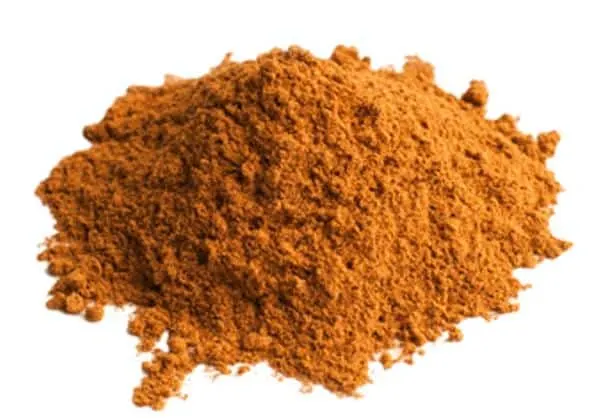
Honey
Honey is another popular ingredient I often hear people use as a rooting agent for succulent cuttings. Honey has antifungal and antibacterial properties, which makes it a good choice for a natural rooting agent. There are a few recipes you can find for honey as a rooting agent.
Here’s an easy one to try:
1 tablespoon honey (pure or raw honey is recommended)
2 cups boiling water
Boil 2 cups of water and remove from heat. Mix the honey in the water. Let it cool. Store the mixture in an airtight jar or container. Keep away from light. To use, dip the cuttings in the solution. The mixture can be stored and will last for about two weeks.
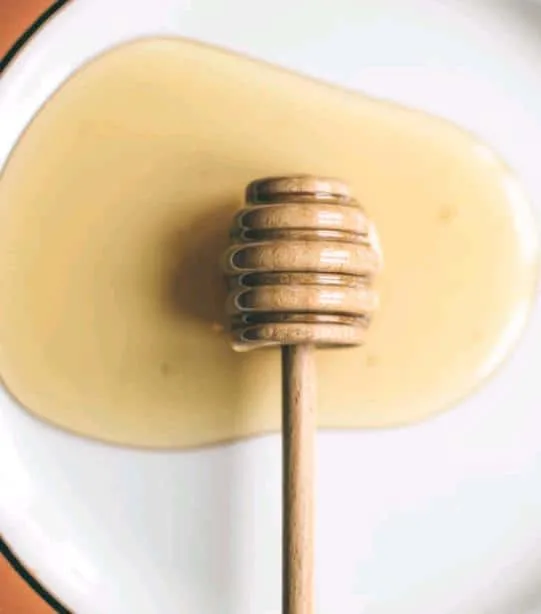
Apple Cider Vinegar
Apple cider vinegar has been commonly used in organic gardening as a weed killer. You can try using apple cider vinegar to help speed up the process of rooting your succulent cuttings. It could be the pesticidal properties of apple cider vinegar, or the trace elements they contain. But a little apple cider vinegar can help get your succulent cuttings going. You only need to use a little apple cider vinegar, as too much can prevent rooting and pure vinegar may kill the plants. Here’s an easy recipe to try:
½ teaspoon apple cider vinegar
8 cups of water
Mix the apple cider vinegar and water. Dip the cut ends into the solution. You can wait for the cuttings to root or stick them in soil directly after dipping in the solution.
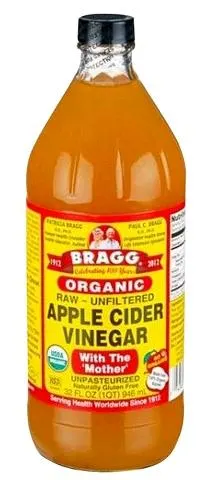
Pesticides and Insecticides
Pesticides are effective in killing the pests in your plants, but they also get rid of beneficial bugs and predators. There are some insects or bugs that you actually want on your plants as they feed on the pests that you are trying to eliminate. Introducing pesticides may destroy the health and balance of the plant’s natural ecosystem and kill off pests and beneficial bugs alike. Not only that, but they are also harmful to pollinators like bees. Instead of using pesticides or insecticides, there are other products you can use that are less harmful to the environment.
Consider using these for getting rid of insects on your succulents:
Neem Oil
Neem oil can be used as a natural pesticide to ward off insects pests. Neem oil is potent and needs to be diluted. Dilute 1 tablespoon or 15 ml of neem oil in 8 cups of water and mix well. Spray the solution onto infested areas and the undersides of the leaves. When using neem oil, do so at night to prevent burning your plant from sun damage.
Rubbing Alcohol
Rubbing alcohol or isopropyl alcohol can be dabbed directly on pests on your succulents. Alternatively, instead of dabbing you can use a spray bottle and spray rubbing alcohol directly onto the bugs. You can also dilute the alcohol about half strength with water. Your plant will not be harmed while killing the bugs with this method.
Soapy Water
Use a few drops of soap (I have tried both dish soap or baby shampoo) in about 2 cups of water. Mix the solution well and spray directly onto affected areas where you see bugs crawling and the undersides of the leaves.
Vegetable Oil
You can also add vegetable oil to soapy water. Put a few drops of soap such as dish soap in about 2 cups of water with about 1 teaspoon of vegetable oil and mix well. Spray onto the infested areas where you see the bugs.
Essential Oils
Citrus oil–a few drops of citrus oil added to a gallon of water can help deter insects and pests
Eucalyptus oil–eucalyptus oil sprinkled directly where insects are found can help get rid of them, or add a few drops of eucalyptus oil in water or soapy water and spray the infested plant a few times until problem is resolved
Introduce Beneficial Insects
Instead of using pesticides to kill off pests, some people introduce beneficial insects where the infestation is to help get rid of pests. These beneficial insects feed on these pests and will help control and eliminate the problem. One of most popular insects are ladybugs. Ladybugs can be purchased from gardening and farming equipment suppliers and may be found in your local nursery. Or they can also be easily purchased from Amazon online.
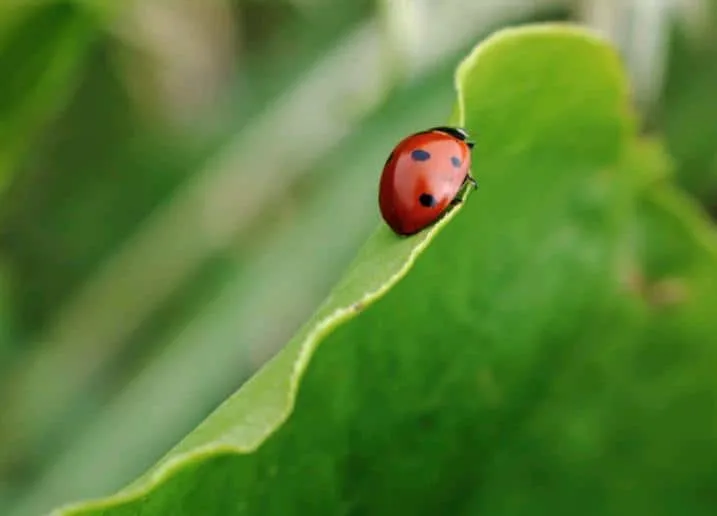
Eco-friendly Pots and Containers
Eco-friendly pots and containers are available if you want an alternative to plastic or materials that are non-biodegradable and pollute our landfills when disposed of. Eco-friendly pots and planters are made of biodegradable material such as coir or coconut fibers, rice hull, and bamboo.
Another way to be more mindful of our environmental footprint is by reusing or recycling plastic containers instead of throwing them out. Another way is to upcycle household items that would otherwise end up in the dumpster and turning them into unique and creative planters. I am in the process of upcycling my kids’ old toys as planters and have used household items such as tin cans converted as pots for my succulents.
Using materials that would end up as trash can get your creative juices going and provide you with opportunities to plant your succulent arrangements in more sustainable ways. Please click on Upcycled Tin Can to see how I potted a cactus in an upcycled tin can. I also used an old pair of crocs as a planter. Please click on Upcycled Crocs for ideas
